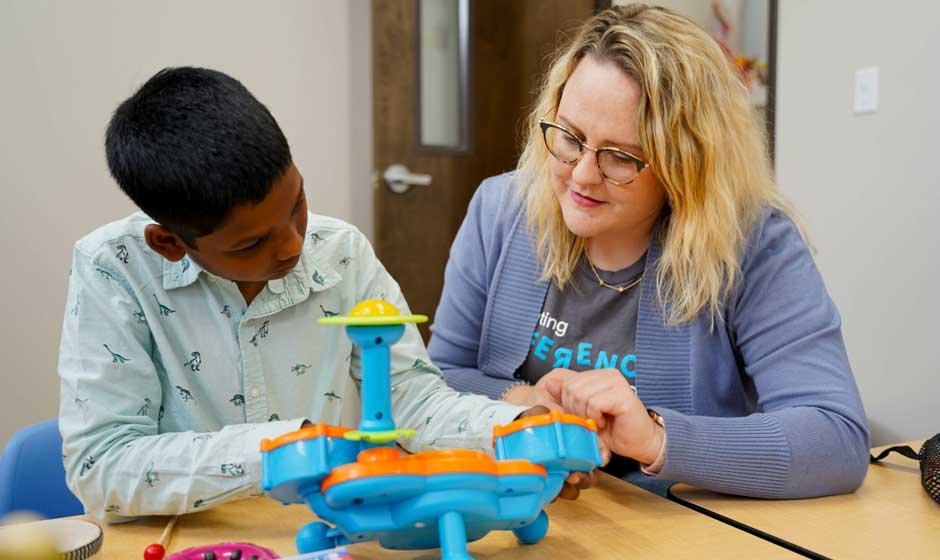Applied Behavior Analysis, commonly known as ABA therapy, is a widely used approach in supporting individuals who face behavioral and developmental challenges, especially those on the autism spectrum. Rooted in decades of behavioral science, it focuses on observing behavior and applying strategies to encourage meaningful change over time. The structured techniques used in ABA are designed to teach new skills, reduce behaviors that may interfere with learning, and promote independence in everyday life. We will explore how ABA therapy is implemented, what it aims to achieve, and the real-world benefits it offers to individuals and families seeking positive behavioral growth.
Ways ABA therapy is implemented
-
Core Principles That Guide ABA Therapy Programs
At the heart of ABA therapy at Step It Up ABA: ABA Therapy In Atlanta, Georgia, is the idea that behavior is learned and can be shaped over time through reinforcement. This process begins with close observation and data collection, where behavior analysts work to understand the triggers and outcomes associated with a person’s actions. Every program is built around individual goals, often targeting communication, social interaction, self-care, academic skills, or emotional regulation. These goals are broken down into smaller, manageable steps taught incrementally, allowing for steady progress through repetition and reinforcement. Positive reinforcement is a key component of the process, which means that desired behaviors are followed by rewarding experiences that encourage those actions to be repeated.
By identifying what motivates a person—praise, a toy, or a break from a task—therapists can build a supportive framework that makes learning feel accessible and achievable. Sessions can occur in various settings, including homes, schools, or dedicated therapy centers, allowing the techniques to be tailored to the learner’s natural environment. One of the defining elements of ABA is its ongoing measurement of behavior and responsiveness. Adjustments are made regularly based on observed results, ensuring the strategies remain practical and relevant. This evidence-based structure allows progress to be tracked in real time, which helps families and therapists understand what works and what might need to be changed.
-
The Role of Consistency and Structure in Behavior Support
Consistency is one of the most essential elements in the success of ABA therapy. When everyone involved in a person’s care—therapists, teachers, parents, caregivers—applies the same behavioral strategies, the person receiving therapy has more opportunities to practice and reinforce the skills they are learning. For instance, if a child is being taught how to ask for help rather than displaying frustration, using the same method across all environments increases the chances that the skill will stick. Structured routines are also a hallmark of ABA therapy. Organizing sessions in predictable ways makes individuals feel more comfortable and confident as they work through tasks. This can be especially valuable for those who find navigating transitions or new activities difficult.
ABA therapists often use visual schedules, timers, or clear verbal cues to help the learner understand what’s expected, reducing anxiety and increasing cooperation. Over time, the structure allows for more independence because routines are internalized and eventually no longer need outside reinforcement. The focus isn’t solely on correcting behavior but also on building a foundation for long-term success. From increasing attention spans to managing emotional responses, the structure of ABA encourages self-control and flexibility. Families are often trained to carry these techniques into daily routines, making them part of meal times, errands, or play. This natural extension of therapy into real-life scenarios helps ensure that skills aren’t limited to one setting or session but become part of how someone interacts with the world daily.
-
Collaboration with Families for Holistic Support
ABA therapy works most effectively when families are involved in the process. Parents and caregivers play an essential role because they are the ones who interact with the individual most consistently outside of therapy sessions. Many ABA programs include parent training as part of their design, ensuring that families understand the techniques used and can implement them at home. This collaboration helps bridge the gap between structured therapy and everyday life. When parents are equipped with the tools to reinforce behaviors or teach new ones during regular activities, the impact of treatment can grow well beyond the clinical setting. Additionally, family involvement allows for a deeper understanding of goals and challenges. Parents can provide valuable insights about behaviors that might not appear during sessions, helping the team create a more complete picture of the individual’s needs.
The input also allows therapy to reflect cultural values, communication styles, and household expectations, which makes learning more relatable. ABA also encourages open dialogue between therapists and families. Regular check-ins, progress updates, and shared observations make it easier to track improvements and address any concerns. This level of communication builds trust and ensures that everyone is working toward the same outcomes. In homes where siblings or extended family members are involved, therapists can guide how to include them in the process without overwhelming the dynamic. The more support a person has across different settings, the stronger the outcomes tend to be. With families taking an active role in ABA therapy, the process becomes less clinical and more connected to everyday living, helping individuals build confidence and capability within their world.
-
Long-Term Benefits and Evolving Applications of ABA Therapy
While ABA therapy is most commonly associated with early intervention for young children, its benefits extend to people of all ages and continue into adulthood. The adaptability of ABA makes it applicable in different phases of life—from teaching a child how to communicate more effectively to helping a teenager develop vocational skills or guiding an adult in improving daily living habits. As individuals’ goals change, ABA programs can evolve to meet those new milestones. One of the key long-term benefits is the promotion of autonomy. The outcome is greater self-sufficiency if someone learns to express emotions more clearly, complete chores without prompting, or participate in group activities with more comfort. The emotional benefits are just as meaningful. Gaining skills that lead to success—no matter how small—builds confidence and reduces frustration for the individual and their support network.
The structured, data-driven nature of ABA also means that therapy constantly tracks what’s working and what isn’t, allowing for timely adjustments that keep progress on track. Another evolving area of ABA is its growing emphasis on person-centered approaches. While the foundation remains rooted in behavioral science, more programs are now integrating social-emotional learning, sensory supports, and collaborative goal-setting to create well-rounded experiences. The focus is increasingly on helping people reach their fullest potential rather than simply eliminating challenges. Schools, job training programs, and community centers are beginning to apply ABA principles in broader ways, showing that this therapy has a role in early development and throughout a person’s life.
ABA therapy offers a structured yet flexible approach to learning and behavior change that can be adapted to many individuals and goals. Its consistency, real-time feedback, and collaboration make it a valuable tool for building essential life skills. As ABA continues to evolve, it offers meaningful opportunities for people to grow, gain confidence, and fully participate in their homes, schools, and communities. Whether used in early childhood or adulthood, its core principles remain focused on positive change and measurable progress, providing a pathway toward greater independence and quality of life.










